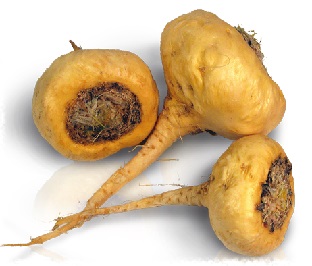
Maca is a biomedical plant that grows at higher altitudes. It has a significant potential for bioprospecting. Among all the benefits, the most authentic one is an improvement in the sexual health of animals and humans. The population of the Andes in Peru has been using it for 2000 years.
With the inception of adaptogens in modern medicine, health professionals and medical scientists are looking for more sustainable sources of nutrition. With the high demand for foods with health benefits, maca root has gained robust attention from scientists and medical experts around the globe.
According to research, native populations of Peru have been using it naturally dried in proportion to amounts more significant than 20g a day. However, no adverse effects on the health of native people have been observed or reported.
Different experimental studies so far have shown that maca possesses properties of an energy booster, fertility enhancer, and inducing better memory. Furthermore, it has been reported to be beneficial for weak bones, benign prostatic hyperplasia, skin protection against UV rays, and sexual dysfunction.
The purpose of this page is to explain the effectiveness of the root in treating different health issues.

Ethnobiology and Chemistry of Maca
It is a plant that has two parts, an underground part, and an overground part. All the benefits associated with it are due to the root.
The edible part of the plant resembles the radish and turnips. It has a tuber that contains hypocotyl and roots. The root of the plant is 10-14 cm long and 3-5 cm wide. The types of maca are differentiated based on the color of the hypocotyl. In Peru, 13 colors have been known, from black to white.
As far as chemistry is concerned, there are primary metabolic substances and secondary metabolites. The primary metabolites are related to the nutritional benefits, and secondary metabolites relate to the medicinal benefits.
In primary metabolites, the root is rich in carbohydrates with 60% content, protein(14%), calcium, fiber, magnesium, lipids, amino acids, minerals, and iron.
The secondary metabolic substances are macaridine, macaene, macamides, and maca alkaloids found in this plant. The other constituents of the plant are sterols, whereas macaenes are unsaturated fatty acids.
Studies have also shown that the number of maca alkaloids, macamides, and machines significantly differs depending on the area where the root is harvested.

Does it work?
Now, we will refer to extensive research work conducted for the benefits associated with maca root.
Let’s start.

Male Reproduction
Two experimental studies were done on male animals to check the impact of maca hypocotyls on sexual function. The doses of 15, 25, 75, and 100 mg/kg were given, and the sexual function was examined at an interval of 7 days to 21 days.
The fortnightly results showed improved sexual behavior, whereas the results of the second study with an observed period of 21 days didn’t show any significant results. To find what component in maca is responsible for better sexual function needs to be studied further.
The studies conducted to find the impact on the sperm count showed results that red maca had no effect on sperm function. Whereas other types of maca and, more specifically, black and yellow intake resulted in higher sperm count in the study of rats.
There were studies conducted to find the contribution of the root in prostatic hyperplasia in males, and the results found were in affirmation. However, the benefits for the prostate were not known to traditional science. Instead, it was the result of modern science.
As far as the impact of maca on sexual desire is concerned, the mechanism has not been known yet. However, the findings have been in agreement with the hypothesis.

Maca for Female Reproduction
The results about the female reproductive system have been in affirmation with the claimed benefits, but it has not been up to the reputation it has made.
In a study conducted on mice, the number of offspring was increased by giving maca. The same trend was seen in the rainbow trouts. According to some laboratory work by scientists, it was found that the red one favors the survival of embryos hence improving the quality of embryos in mice.
Another study on mice was conducted by using the red and the black maca extracts. Its findings suggested that protective effects on bones were seen without disturbing estrogens. The results can be generalized for the claim of the root in treating osteoporosis in women.

Learning and memory
The trend of giving maca to the children is common among the Peruvian population. They associate it with better performance in school. However, they don’t know what type has the most fruitful impact on the cognitive ability of humans.
From the research conducted, it has been shown that the black is most beneficial for increasing memory retention and cognitive ability among children.

How does maca work on Peru natives?
The research that has been conducted so far was around animals. But there was a study conducted on the locals of Peru who have been using maca in their daily diet. Two groups were observed, one which was taking it and others, which were not.
The observed metrics were overall health status, amount of fractures, kidney function, and hemoglobin. The men and women observed were between the age of 35 to 75.
The findings of the research showed that people who were consuming it had better health status, rare or no chronic mountain sickness, and a lower rate of fractures. Furthermore, it was also found that those people who were consuming maca had a lower body to mass ratio and low systolic blood pressure.
The natives of Peru use it in their daily life since childhood. It is primarily added to juices, ranging from different colors of hypocotyls.

Maca does work!
In the last three decades, the plant has become one of the favorites of people around the globe. Researchers are also busy finding its benefits. However, available research strongly supports the health benefits.
Therefore the question being asked, “Does maca work?” can be answered with a calculated certainty. And the answer is yes, it does work, and the reputation earned is not without reason.
![]()

✓ Related…
☰ Types of Maca and How to Use it? ⇗
☰ Does maca have side effects? ⇗
☰ Peruvian Maca to Improve Sex Drive ⇗


